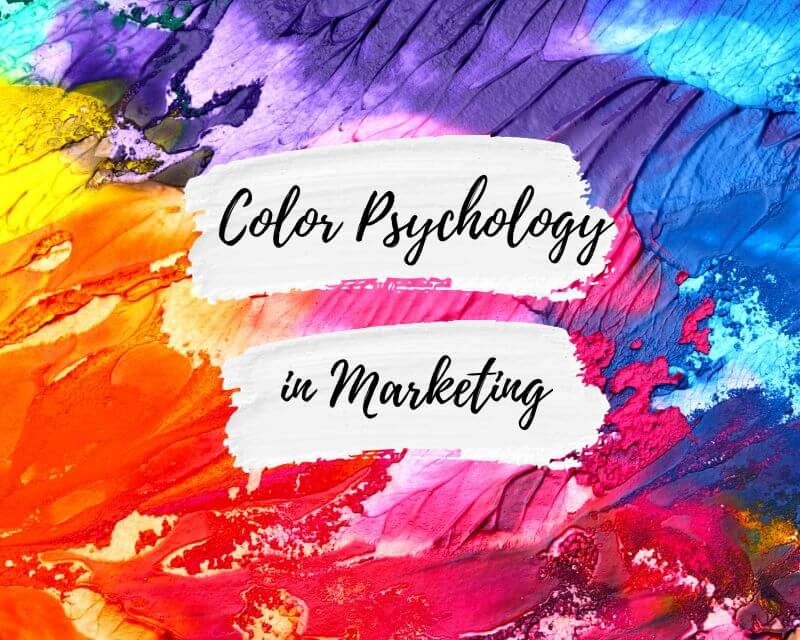The Influence of Color Psychology in Marketing and Branding Strategies
Colors aren’t mere aesthetic choices but dynamic tools capable of stirring emotions, forging brand identities, and ultimately shaping purchase decisions. Every business owner or marketing expert must learn about color psychology in marketing to wield remarkable power over consumer behavior and perception. It’s because choosing the right colors holds a multitude of advantages and can be the key to success for businesses and brands.
They help you establish profound emotional connections with your target audience, carve out distinctive brand identities, and impact the buyer’s decision. As per Review 42, colors influence over 85% of shopper’s purchase decisions. Want to know more about color psychology in branding and marketing? Let’s dive in!
What is Color Psychology in Marketing and Branding?
Color psychology is the study of how colors impact human emotions, thoughts, and behaviors. For instance, a warm color like orange often elicits excitement and passion.
A cool color, on the other hand, like blue, tends to create a sense of calm and trust. All in all, color psychology is important for advertising, branding, and marketing strategies, where the choice of colors can strongly influence consumer reaction and overall success.
Benefits of Using Color Psychology in Marketing and Branding
Here are some of the benefits of using color psychology in marketing and advertising:
Positive Impact on the Audience
The strategic use of colors can have a profoundly positive impact on the audience. Different colors can trigger various emotions and responses, like excitement, urgency, warmness, etc. By aligning color choices with the intended emotional response, you can create a more favorable and memorable experience for your audience.
Improved Connection with Potential Customers
Color psychology in marketing also enables you to build a meaningful connection with potential customers. When colors resonate with the target audience’s values, emotions, and aspirations, they can evoke a sense of belonging and understanding. This connection extends beyond the product or service itself, fostering loyalty and long-term relationships.
Better Brand Recognition
At last, using color psychology in marketing enhances your brand recognition by 80%. How? As you consistently incorporate specific colors in your branding, like Coca-Cola’s red and white or IKEA’s blue and yellow, it creates a strong connection in people’s minds. This consistency makes your brand more recognizable, boosting chances of purchase.
Top 5 Brand Colors and Their Meaning
Every color has a different meaning and conveys a different message. Here are the top 6 brand colors you should know, along with their meaning:
Blue
Blue is one of the most popular brand colors, with 57% of men and 35% of women ranking it as their top choice. It conveys trust, reliability, and professionalism.
Many Institutions and social media platforms like Facebook use blue in their branding to instill a sense of security and competence in their customers. However, like any color, blue has its positives and negatives that are:
- Positives: Trust, Logic, Serenity, Security, Loyalty
- Negatives: Unappetizing, Emotionless, Unfriendly
Purple
Purple is often linked with creativity, luxury, and sophistication. Brands that use purple, such as Cadbury and Hallmark, aim to create an impression of uniqueness and quality. Here are the positives and negatives of purple:
- Positives: Wealth, Imaginative, Wisdom, Spirituality, Sophistication
- Negatives: Unfriendliness, Anger, Danger, Aggression, Hostility
Red
Red is a powerful and attention-grabbing color. It symbolizes energy, passion, and urgency. Many food and beverage brands use red to stimulate appetite and prompt quick decisions, like Coca-Cola and McDonald’s. On the other hand, many websites use red color on call-to-action buttons to promote urgency in visitors. The positives and negatives of red brand color psychology are:
- Positives: Excitement, Power, Energy, Fearlessness
- Negatives: Anger, Danger, Hostility, Pain
Orange
Orange is a very vibrant and energetic color that radiates enthusiasm and creativity. Brands that use orange aim to stand out and create a sense of excitement. It’s commonly associated with youthfulness and innovation. Companies like Nickelodeon and Fanta employ orange to appeal to a youthful audience and evoke a feeling of fun and adventure. Here are the positives and negatives of orange color:
- Positives: Confidence, Energy, Vitality, Courage, Warmth
- Negatives: Immaturity, Laziness, Frustration
Green
Green is often linked to nature, growth, and health. Brands like Starbucks incorporate green typically to convey a sense of eco-friendliness, sustainability, and well-being. It also represents tranquility and freshness, making it suitable for organic food and health brands. Here are the positives and negatives of green color psychology branding:
- Positives: Health, Harmony, Nature, Growth, Hope, Prosperity
- Negatives: Possessiveness, Boredom, Materialism
Conclusion
Color psychology in marketing and advertising is all about harnessing the emotional impact of colors to captivate, engage, and influence consumer behavior. You can use colors strategically to improve brand recognition, positively impact the audience, and improve connections with potential customers.

